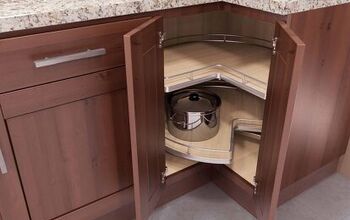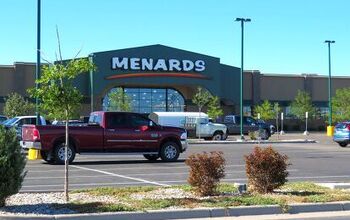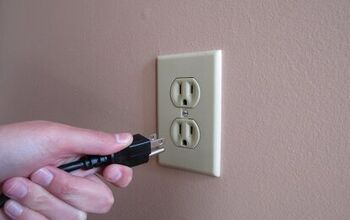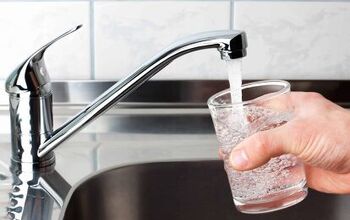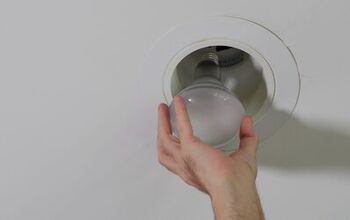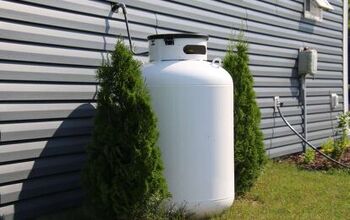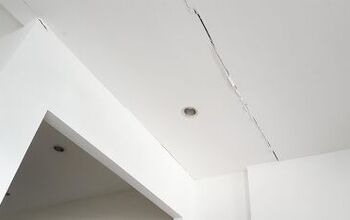Signs You Need To Change Your Plant's Soil pH (And How To Do It)

Most people understand how important it is to maintain a healthy pH. If we are slightly acidic or alkaline, our bodies can function in very different ways. The same is true for plants. Most plants, like humans, enjoy pH levels somewhere close to the neutral range. If your plant's soil has an acidic or alkaline pH, it may be in trouble.
Signs that your soil’s pH is either too acidic or too alkaline include leaves changing colors, or even burnt tips of leaves. You may notice wilted or discolored grass where the pH is off or an increase in certain weeds like dandelions. Other signs you need to change a soil’s pH include plants struggling to root or grow from seed, or unexplained stunted growth.
A plant's soil’s pH can change for all sorts of reasons, and it’s easy for this problem to go unnoticed. This is why it is so important to look for warning signs that the soil’s pH is off. Early detection is the best way to salvage your lawn and landscaping before it succumbs to an off-balance pH. Below is a list of signs your soil’s pH is off, as well as ways to bring it back to healthy levels.
Seven Signs That Your Plant's Soil pH Is Off
1. Leaves Are Turning A Strange Color
One visual red flag that your soil’s pH is off is abnormal colors in your plant’s leaves. Leaves can change colors dramatically when the soil pH is off, often becoming red or purple. You may also notice yellow veins in the leaves.
In some cases, leaves will completely die, or there will be brown spots. Leaves can tell you a lot about how a plant is doing. If you notice leaves looking abnormal in color or size, check the soil’s pH.
2. Soil Testing Shows The pH Is Off
The clearest indicator that your soil’s pH is off is when you have your soil tested and the results show acidic or alkaline levels. You must have your soil tested periodically, especially if you live in an area that is known for having either acidic or alkaline soil.
Furthermore, visual signs of a pH imbalance can only go so far to diagnose a problem. By testing the soil, you know whether it is too acidic or alkaline, and also how much you must adjust it. Consider testing your soil seasonally, or any time there is a potential change to your soil’s composition.
3. An Unexplained Influx Of Weeds
Weeds can pop up for all sorts of reasons. If, however, you rarely have weeds, but suddenly notice an influx in certain types of weeds, the pH of the soil could be to blame. If you notice a lot of dandelions popping up out of nowhere, then there is a good chance your soil is more acidic than normal.
If you notice patches of weeds, but other sections that are pristine, consider testing the soil where the weeds are to see if it needs adjusting.
4. Wilted Or Yellowing Grass
If you do all you can to keep your lawn looking great but start to notice it wilting or yellowing, then the pH could be the problem. Yellowing or wilting grass tends to be the first sign that the pH of the soil is off.
If your grass looks sparse or weak, and it struggles to grow, then you should check the soil pH immediately. The longer you wait to fix the pH problem with your lawn, the more expensive the fix tends to be.
5. Your Plants Show Signs Of Stunted Growth
If your plants aren’t growing like they used to, or don’t seem to grow at all, then the soil may be too acidic or too alkaline. Plants have particular pH needs. When you try to grow a plant in soil that isn’t at the right pH, it may struggle to absorb its vital nutrients.
If a plant can’t eat, then it can’t grow. Monitor your plants, and see how much they grow. If you see an area or certain species of plants that have stopped thriving, then test the soil in that area.
6. Burned Leaf Tips
In addition to strange colors on your leaves, burnt leaf tips are another sign that there is a problem with your soil’s pH.
7. Plants Won’t Root Or Grow From Seed
Alkaline soil makes it hard for plants to absorb vital nutrients. For this reason, when soil pH is too high, you may find it difficult (or even impossible) to grow some plants from seed. Other plants may struggle to take root once planted and may look like they are suffering once planted in the ground.
Seven DIY Methods To Adjust Your Soil’s pH
1. Add Elemental Sulfur
One fast and effective way to lower the pH of your soil is to add elemental sulfur. The change in pH can be noticed in as few as two months. It works best to incorporate elemental sulfur into your soil in the early spring. Test the soil after two to three months to see if it has lowered.
2. Use Dolomite To Lower Soil pH
Dolomite is a great option for those who have soil that is struggling to grow plants due to a high pH. Dolomite will lower the soil’s pH with the added benefit of also adding vital nutrients to the soil. Dolomite contains traces of magnesium and calcium, both of which are vital to plant growth.
3. Use Thoroughly Decomposed Compost
One natural, organic, and potentially free way to adjust your soil’s pH is to use finished and decomposed compost from your compost pile. Most quality compost has the magic ability to balance soil. This means that if your soil is a bit too acidic, it will bring up the pH, and if it’s too alkaline, it will bring it down. It can take time, but it’s a natural and effective way to balance your soil’s pH.
4. Add Lime To Your Soil
If you want your soil to be less acidic, and more alkaline, then adding lime is a great way to accomplish this. Lime, or calcium oxide, made from ground limestone, is a great way to balance acidic soil. It promotes root growth and makes fertilizer more efficient.
5. Sprinkle Coffee Grounds On Soil
If you are wondering what you can do with all your coffee grounds, you’ll be happy to know you can add them to your soil to adjust its pH. This can work if you need to slightly lower the pH of your soil. Coffee grounds also have lots of natural plant foods like phosphorus and potassium, making it a great natural food for your plants.
6. Use Organic Mulch
Quality mulch has many benefits and can be a real asset in your garden. In addition to protecting your plant’s roots and keeping the ground moist, organic mulch can also boost the soil’s pH. It can neutralize slightly acidic pH levels over time, making it a great choice for those who tend to have soil that leans slightly more acidic than normal.
7. Fold Peat Moss Into The Soil
Peat moss is great at creating soil drainage, and it can also help lower your soil’s pH. If you have specific plants that like lots of drainage and acidic soil, then fold in plenty of peat moss to the area where you plant these specific plants.
Summing Up Signs You Need To Change Your Plant's Soil pH
Soil pH is an invisible yet crucial part of plant health. If the soil is too acidic or too alkaline, it can spell disaster for your plants. PH levels can change over time, which is why you must test your plant's soil pH regularly. Some signs the soil pH is off include discolored leaves, stunted growth, and even wilting and dying grass.
To adjust your plant's soil pH, you can add dolomite, lime, or elemental sulfur to the soil. If you want to take an organic approach to adjusting the soil’s pH, you can add decomposed compost, organic mulch, or peat moss to boost or neutralize your soil’s pH.
Related Guides:

Tom Gaffey is an expert writer who currently resides in Washington D.C. Tom has a passion for real estate and home improvement writing, as well as travel and lifestyle writing. He lived the last twelve years in Hawaii where he worked closely with luxury resorts and event planners, mastering his knowledge of aesthetics and luxury products. This is where he found his passion for home improvement and a keen interest in DIY projects. Currently, Tom resides in Washington D.C, and also working on his debut fiction novel.
More by Tom Gaffey










